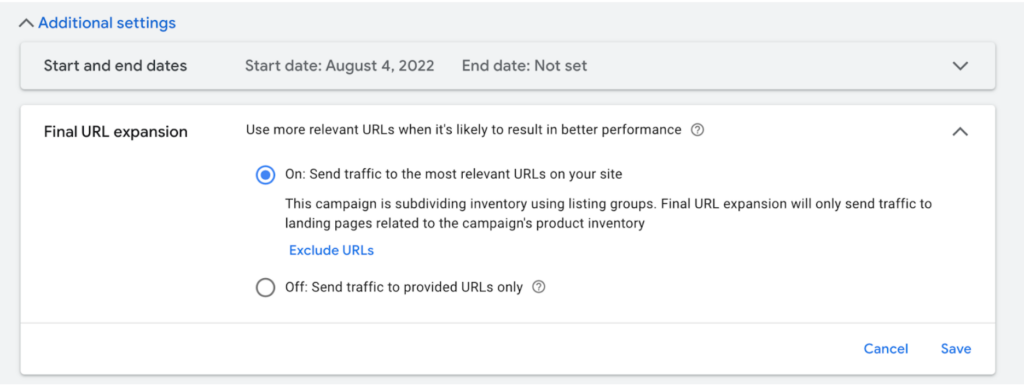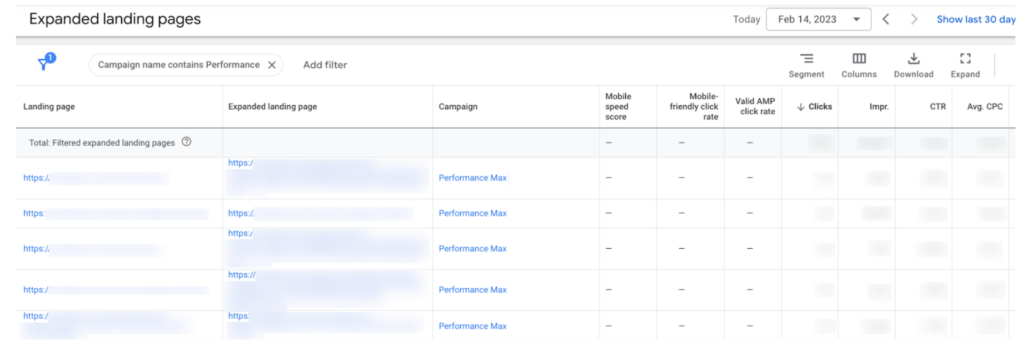All too often, Google comes out with the (alleged) latest and greatest feature. We as marketers listen to pitches and test accordingly. This sentiment holds especially true for automated strategies with minimal data visibility.
Enter Performance Max — a campaign type that combines aspects of Smart Shopping, Display, DSA, Discovery, YouTube and Search — a smorgasbord of Google ad offerings.
When Performance Max launched, I was a huge skeptic and doubted a fully automated campaign type, with limited data insights and requiring blind trust in Google. I wrote it off and filed it away for the future (maybe). Then, standard shopping volume began to dip for one of my clients, challenging us to find new ways to reverse the trend and unlock new volume.
I reviewed our options and remembered this little thing called Performance Max.
A couple of factors convinced me that we needed to test Performance Max. One was the introduction of the New Customer Acquisition tool to this campaign type. The tool tells your Performance Max campaign that you only want it to target net new customers — something marketers could not previously do with a standard shopping campaign. I had prior success with a similar tool in Smart Shopping before, so this was an exciting addition (and the first bit of additional control I longed for).

Additionally, all signs point to Performance Max as the way of the future, and Google eventually forcing our hand to adopt it. Google has already migrated Smart Shopping campaigns into Performance Max. We wanted to be ahead of the transition if and when it happened. Google also indicated that many future betas and improvements would focus on their automated campaigns. With all of this information, we decided it was worth a test.
When it comes to a program with a minimal track record and almost full control by Google, it’s wise to jump right in with a six-figure budget and put all your eggs in that basket.
Wait. No. That’s wrong.
Cautious. It’s best to be cautious. And that is just how we did it.
We identified a category within our existing shopping campaigns that saw lackluster performance. The negative impacts would be easily mitigated if Performance Max crashed and burned. We also opted for category-level breakouts for a couple of reasons, ease of organization and relevancy when it comes to the assets we upload. It also makes measuring the performance of our existing Shopping program easier since that structure is the same.
We ran both Shopping and Performance Max concurrently, targeting new customers and returning in separate campaigns. We began without any tROAS targets, opting for a max conversion value strategy because we wanted the campaigns to pick up volume quickly. To measure success, we reviewed the current conversion rates, volume and efficiency compared to that category within Shopping before and during the test. We also wanted to see if our percentage of new customers coming from Performance Max was higher than what we were driving in Shopping.
The results came quickly. ROAS was immediately more than 3x that of any of our other campaigns (eventually cooling down to an 80% lift by week 3), and the percentage of new customers coming through the Acquisition campaign was around 70-80% compared to the 50-60% we hovered around in standard shopping. As a bonus, we saw a small lift in volume in our other campaigns that coincided perfectly with when we turned Performance Max on. We thought we had struck gold and quickly wanted to expand to all categories.
After we launched these other campaigns and gathered a few more weeks of data, we realized a few things.
Overall, we saw great initial success but encountered issues. How do we make Performance Max a solution that works for us long term?


While much information is still lacking, especially in control and data visibility, Performance Max can be a powerful addition to an existing program.
Is it the end all be all I imagine Google once hoped it would be? No. Can it benefit an account run by a team who knows how to manage it? Absolutely.
Automation is the way of the future, and Google is listening and giving us little bits of additional data and control here and there. Get on board now and learn how to make it work for you.
All the latest digital advertising tips and industry insights delivered to your inbox every quarter
Running campaigns without Offline Conversion Tracking is like fishing blind—uncertain and inefficient. Learn how OCT connects CRM data to ad platforms, helping CMOs optimize for real business impact, from quality leads to closed deals.

The B2B landscape is relentless, and mediocre video production won’t cut it. Learn why scaling high-quality video production is essential to drive ROI, stand out, and stay competitive in today’s paid media game.

Misaligned metrics and fragmented strategies aren’t just inconvenient—they’re costing your marketing team revenue and results. Explore the root causes of data chaos and learn how to align your metrics for paid media success.